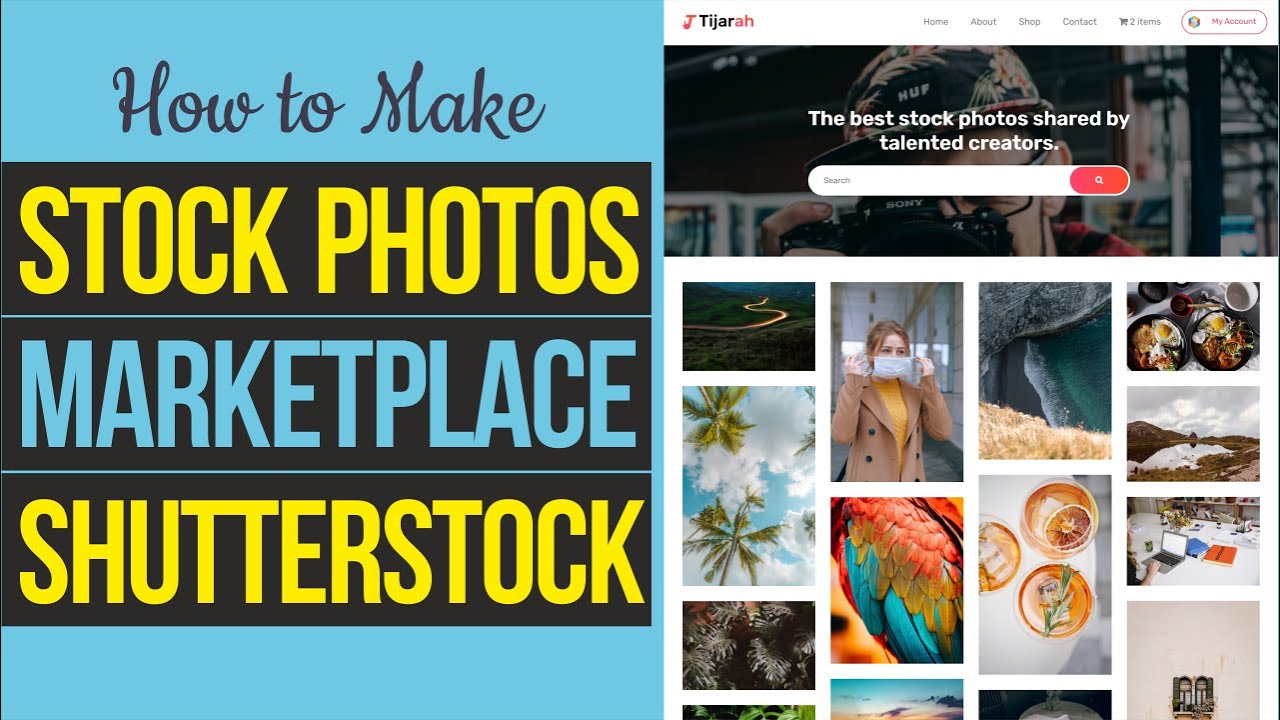If you’re aiming to create stock content that actually sells on Shutterstock, the first step is understanding what they’re looking for. Shutterstock has specific guidelines to ensure that all content on their platform meets quality and legal standards. Ignoring these can lead to your submissions being rejected, which is frustrating and time-consuming. So, let’s break down the essentials.
Shutterstock requires that all images, videos, and illustrations be high quality, well-lit, and free of noise or blurriness. They prefer content that’s technically perfect—think sharp focus, natural colors, and proper exposure. For photos, models must have model releases if identifiable, and property releases are needed for recognizable private property. This means if your shot features a recognizable person or private property, you’ll need the proper legal documentation to sell it.
Additionally, Shutterstock emphasizes originality. They discourage overly staged or cliché images. Instead, they want fresh, authentic visuals that tell a story or evoke emotion. This ties into their content themes—diversity, inclusivity, and current trends are highly valued.
Legal considerations are also crucial. Avoid copyrighted material, logos, or branded products unless you have permission. For videos, ensure smooth editing, good audio quality, and natural movement. Remember, the platform values content that can be used across various projects, so versatility matters.
To stay compliant, always review Shutterstock’s detailed contributor guidelines, which outline specific requirements for each type of media. Regularly browsing their top-selling content can give you a sense of what’s currently in demand and ensure your submissions align with their standards. Keep quality, originality, and legality at the forefront, and you’ll be much more likely to see your content accepted—and sold!
Researching Popular and Trending Topics for Stock Content
Creating content that sells is all about tapping into what’s trending and what buyers are looking for right now. The good news? Shutterstock makes it easy to spot these trends if you know where to look. Doing your homework on popular and trending topics can dramatically increase your chances of creating sellable content.
Start by exploring Shutterstock’s Top Visual Trends section, which showcases what’s hot in the marketplace. These trends often reflect current world events, cultural shifts, or seasonal interests. For example, during times of global health focus, health and wellness images tend to perform well. During holiday seasons, themed content like Christmas or Halloween is in high demand.
Another great tip is to browse Shutterstock’s Best Sellers and Collections. These collections highlight what buyers are purchasing frequently. Pay attention to the styles, colors, and themes that appear repeatedly. Are minimalist designs trending? Is there a rise in diverse representation? Noticing these patterns helps you tailor your content accordingly.
Social media platforms like Instagram, Pinterest, and TikTok are also goldmines for spotting emerging trends. Look for popular hashtags related to stock photography, digital art, or video content. See what kinds of visuals are gaining attention and consider creating similar but original content.
Utilize keyword research tools such as Google Trends or Shutterstock’s own keyword insights. These tools can show you what people are searching for online. For instance, if “remote work” or “sustainable living” are trending keywords, creating content around these themes could be a smart move.
Finally, stay updated with current events and cultural shifts. News stories, viral videos, or societal movements can inspire relevant, timely content that buyers need urgently. The key is to balance trending topics with your unique creative style, ensuring your content stands out.
By consistently researching and staying on top of what’s popular, you’ll be better positioned to create stock content that not only sells but also remains relevant in a constantly evolving marketplace.
Planning and Organizing Your Photos and Videos for Better Results
Before you even pick up your camera or smartphone, taking a little time to plan and organize your shoot can make all the difference in creating content that sells. Think of it like preparing a recipe—you want to gather all your ingredients beforehand so your shoot goes smoothly and efficiently.
Start by identifying your target market. Are you aiming to create images for business websites, social media campaigns, or educational platforms? Knowing your audience helps you decide what kinds of photos and videos will be most appealing and in demand on Shutterstock.
Next, brainstorm ideas that align with current trends and popular themes. For example, authentic lifestyle shots, remote work scenes, healthy eating, or diverse groups of people are always in demand. Make a list of concepts you want to capture, and plan your shoot around those themes.
Organizing your content is just as important as planning your ideas. Create a shot list that details each scene or subject you need. This way, you won’t forget crucial shots and can keep your shoot on track. For each shot, note:
- The location
- The props needed
- The models or subjects involved
- The specific angle or composition
Having all this mapped out saves time and prevents chaos on the day of shooting. Plus, it helps you maintain a consistent style and theme across your content, making it more cohesive and marketable.
Finally, organize your files systematically. Use clear naming conventions and folders categorized by shoot date, theme, or content type. This makes it easier to find your best shots later and submit them confidently to Shutterstock.
Technical Tips for Shooting High-Quality Stock Content
Shooting stock content isn’t just about capturing something visually interesting; it’s about ensuring your images and videos meet professional standards so they stand out and sell. Here are some practical technical tips to help you get top-notch results.
1. Use Proper Lighting: Natural light is your best friend, especially for lifestyle and portrait shots. Shoot during the golden hour—shortly after sunrise or before sunset—for soft, flattering light. If shooting indoors, consider investing in softbox lights or ring lights to create even illumination and avoid harsh shadows.
2. Focus Sharpness and Depth of Field: Always ensure your main subject is in sharp focus. Using a small aperture (like f/8 or f/11) can help keep everything in focus, which is often preferred for stock images. This gives buyers flexibility to crop and edit as needed.
3. Use a Tripod: Steady shots look professional and avoid blurry images. A tripod is especially helpful for videos or low-light conditions where longer exposure times are necessary.
4. Pay Attention to Composition: Follow the rule of thirds, leading lines, and avoid cluttered backgrounds. Keep your composition clean and balanced, ensuring the main subject is prominent and easily identifiable.
5. Capture Multiple Angles and Variations: Shoot the same scene from different perspectives, distances, and lighting conditions. This gives buyers a variety of options to choose from, increasing the chances of your content getting accepted and sold.
6. Record in High Resolution: Always shoot in the highest resolution your equipment allows. Shutterstock prefers high-resolution files because they can be scaled without losing quality.
7. Maintain Consistent White Balance: Set your camera’s white balance manually or use presets suitable for your lighting conditions. Consistent color tones across your content look more professional and cohesive.
Remember, investing a little extra time in your technical setup can elevate your stock content from average to excellent. When your photos and videos look polished and professional, they’re much more likely to attract buyers and generate sales on Shutterstock.
Editing and Optimizing Your Content for Better Visibility
Once you’ve created your content, the next step is all about making sure it gets noticed. Think of it as giving your work a little makeover to ensure it stands out amidst thousands of other submissions. Editing and optimization are key to increasing your chances of making sales on Shutterstock.
First, review your content carefully. Check for any technical issues like pixelation, poor lighting, or blurry images. Use editing tools such as Adobe Photoshop or Lightroom to enhance colors, adjust brightness, and sharpen details. Well-edited images look more professional and appealing to buyers.
Next, pay close attention to keywords and descriptions. Shutterstock relies heavily on metadata to categorize and display your content. Think about what potential buyers might search for—use relevant, specific keywords that accurately describe your work. For example, instead of just “flower,” try “vibrant sunflower in bloom” or “close-up of a red rose.”
Here are some tips for effective optimization:
- Use descriptive titles: Craft clear, concise titles that capture the essence of your content.
- Write detailed descriptions: Include relevant details, context, and any unique features.
- Select appropriate categories: Place your content in the most relevant categories to improve discoverability.
- Incorporate keywords naturally: Avoid keyword stuffing; instead, integrate keywords smoothly into your descriptions.
Additionally, consider the technical specifications required by Shutterstock. Ensure your files meet their standards: high resolution (usually at least 4MP for images), proper color profiles (sRGB), and the correct file formats (JPEG for photos, PNG for graphics). Small technical issues can prevent your content from being accepted or show up in searches.
Remember, editing isn’t just about fixing mistakes—it’s about elevating your content to look polished and professional. The better your images and videos look, and the more accurate and optimized your metadata, the higher their chances of being seen and purchased.
Uploading Your Content and Maximizing Its Selling Potential
Now that your content is polished and optimized, it’s time to upload and set it up for success. Uploading might seem straightforward, but there are several strategies you can use to maximize your content’s selling potential right from the start.
First, ensure you’re uploading high-quality, correctly formatted files. Use the highest resolution possible within Shutterstock’s guidelines. This not only improves the visual appeal but also helps your content stand out in search results.
Next, pay attention to your keywords and metadata again during the upload process. Properly filled-out titles, descriptions, and tags are your best tools for discoverability. Be thorough—use all available keyword slots and think about different ways potential buyers might search for your content. For example, for a beach scene, include keywords like “seaside,” “coast,” “summer vacation,” or “ocean view.”
Here are some additional tips to maximize your content’s sales potential:
| Strategy | What to Do |
|---|---|
| Upload Consistently | Regular uploads keep your portfolio fresh and increase visibility over time. |
| Use Collections | Group related content into collections to create themed sets that attract buyers looking for cohesive visuals. |
| Promote Your Content | Share your Shutterstock portfolio on social media or personal websites to drive more traffic and potential sales. |
| Monitor Trends | Stay updated on popular topics and seasonal themes, then tailor your content to match current demand. |
| Offer Variety | Upload a mix of images, vectors, and videos to appeal to a broader audience and diversify your income streams. |
Finally, pay attention to Shutterstock’s analytics and sales reports. Learn which types of content perform best and refine your future uploads accordingly. The more you understand your audience’s preferences, the better you can tailor your content to meet their needs.
Uploading your work is just the beginning. The real magic happens when you combine quality, strategic optimization, and active promotion. With these practices in place, you’ll give your content the best chance to succeed and generate consistent income on Shutterstock.
Common Mistakes to Avoid When Creating Stock Content for Shutterstock
Creating content for Shutterstock can be a rewarding experience, but it’s easy to fall into some common pitfalls that might hurt your chances of making sales. Let’s talk about these mistakes so you can steer clear and boost your success.
1. Ignoring Quality Over Quantity
It’s tempting to upload as many images or videos as possible, but quality always trumps quantity. Shutterstock’s reviewers look for sharp, well-composed, and properly exposed content. Low-resolution images, blurry shots, or poorly lit videos are likely to be rejected or ignored by buyers.
2. Not Covering Popular or Relevant Topics
Sticking only to niche subjects might limit your sales. Instead, pay attention to trending topics, seasonal themes, or widely used categories like business, technology, health, and lifestyle. Conduct some research on what buyers are searching for to align your content with demand.
3. Overusing or Misusing Model and Property Releases
If your content features recognizable people or private property, you need appropriate releases. Failing to obtain or upload these releases can lead to content being rejected or removed. Always ensure you have the necessary permissions before submitting.
4. Ignoring Keyword Optimization
Keywords are your main way for buyers to find your content. Don’t just add generic tags; be specific and relevant. Use descriptive, accurate keywords, and think about what a buyer might search for. Avoid keyword stuffing, which can reduce your content’s visibility.
5. Uploading Duplicate or Similar Content
While having a variety of content is good, avoid uploading multiple similar images or videos without differentiation. Shutterstock values unique and fresh content, so focus on creating distinct, high-quality pieces rather than repetitive shots.
6. Not Reading Shutterstock’s Guidelines
Each platform has specific rules about content standards, model releases, and technical requirements. Ignoring these guidelines can lead to rejections or account issues. Always stay updated with Shutterstock’s contributor guidelines and best practices.
Final Tips for Increasing Your Earnings on Shutterstock
Want to maximize your earnings and make your Shutterstock portfolio stand out? Here are some final tips to help you get there:
- Consistently Upload New Content: Regular uploads keep your portfolio fresh and increase your chances of being featured or recommended.
- Focus on Niche Markets: While covering popular topics is good, finding a niche can help you become a go-to creator in that category, leading to loyal buyers.
- Optimize Your Keywords and Titles: Use relevant, specific keywords and craft clear, enticing titles. Think about what buyers would search for and what would make your content stand out.
- Pay Attention to Technical Quality: Always ensure your files meet Shutterstock’s technical standards — proper resolution, correct color profiles, and no watermarks or branding.
- Analyze and Learn from Your Data: Use Shutterstock’s contributor dashboard to see which content performs best. Notice patterns and create more of what sells well.
- Engage with the Community: Participate in forums, read feedback, and learn from other successful contributors. Networking can provide valuable insights and motivation.
- Stay Updated and Adapt: Trends change, so keep an eye on current events, seasonal themes, and emerging styles. Adapt your content creation accordingly to stay relevant.
Remember, consistent effort, attention to detail, and understanding what buyers need are key to increasing your earnings. Keep honing your skills, stay patient, and enjoy the creative journey!



